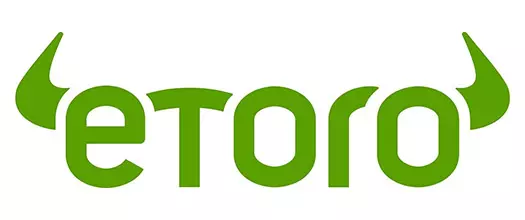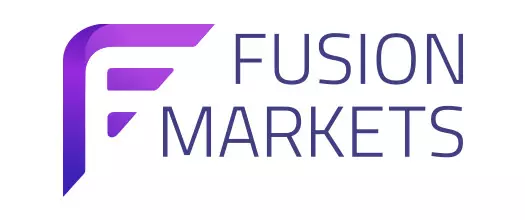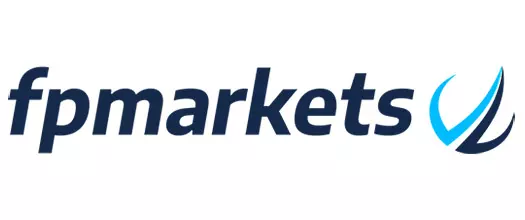- Jump to:
- Main features of the best 1:100 Leverage Forex brokers
- What Is Financial Leverage
- Leverage in Trading
- Margin
- How Does Leverage Work in Forex
- Is 1:100 Leverage Suitable for You
- Advantages
- Risks of Using
Leverage is one of the most important and attractive characteristics of forex and CFD trading nowadays. With leverage, traders make use of borrowed funds to open larger positions with a smaller capital outlay. The advantages are obvious – traders can multiply the potential profits from a successful strategy many times over. On the downside, however, leverage carries significant risks because it involves trading with borrowed funds, which can lead to losses exceeding the initial investment.
 Plus500 USThis content applies only to Plus500 US and clients from the United States. Trading futures involves the risk of loss.
Plus500 USThis content applies only to Plus500 US and clients from the United States. Trading futures involves the risk of loss. eToro61% of retail investor accounts lose money
eToro61% of retail investor accounts lose money Fusion Markets74-89% of retail's CFD accounts lose money
Fusion Markets74-89% of retail's CFD accounts lose money FP Markets73.85% of retail investor accounts lose money
FP Markets73.85% of retail investor accounts lose money Global Prime74-89% of retail CFD accounts lose money
Global Prime74-89% of retail CFD accounts lose money Pepperstone75.5% of retail investor accounts lose money
Pepperstone75.5% of retail investor accounts lose money
Below you can find a comparison table of forex brokers that offer 1:100 leverage. We rank them based on several factors, including regulation, spreads and commissions, Trustpilot rating, tradable markets, trading platforms, and deposit and withdrawal methods.
Our team has thoroughly evaluated all brokers listed below using TradingPedia’s exclusive methodology.
Main features of the best 1:100 leverage forex brokers
- Brand
- Trading platforms
- Minimum deposit
- Regulations
- Trading instruments
- Spreads
- Leverage for Forex CFDs
- Leverage for Crypto CFDs
- Leverage for Indices CFDs
- Deposit methods
- Withdrawal Methods
- Commission per Lot
- Contact details
Most brokers offer leverage ranging from 1:2 to more than 1:1,000, depending on the requirements and initial investment of their clients. In most cases, traders can choose leverage rates such as 1:50, 1:100, 1:200, etc., when trading currency pairs. Different leverage levels are suitable for traders with varying knowledge and experience. When deciding how much to borrow from their broker, traders also need to consider their individual needs and the strategy they plan to apply.
What is financial leverage?
Financial leverage is not a new development in the economy but has been used by banks and companies for decades. In more general terms, it refers to using borrowed capital to buy assets and increase a firm’s or an individual’s investment. It is an important concept since it directly affects investors’ return on investment and increases risk.
The purpose of leverage is to allow investing without the need to use too much equity. The idea is that the after-tax profit from a leveraged transaction will exceed the borrowing costs. One simple example of leverage is a mortgage – when we purchase real estate, we finance a portion of the purchase price with mortgage debt. In other words, we use leverage to avoid paying the full price with our own equity.
Leverage in trading
The name of this technique comes from the effect of the lever. In physics, a lever is a simple machine that amplifies an input force to provide a greater output force. In trading, and forex trading in particular, leverage allows traders to control much larger positions than they could with only their own capital.
Also referred to as margin trading, leveraged trading is offered by brokers for different financial instruments, including options, futures, and spread bets. Leverage is commonly used when trading contracts for difference (CFDs) across different asset classes, including forex, stocks, indices, commodities, cryptocurrencies, and exchange-traded funds (ETFs). It is important to understand that leverage does not increase the profit potential of a trade; it simply multiplies both the profits and the losses.
Margin
Another essential part of trading with leverage is margin. Although interconnected, leverage and margin are not the same. Leverage refers to the ability to control a large position with a small amount of capital, while margin is the minimum amount traders need to deposit.
When using leverage to open a position, traders do not need to deposit the full value of the traded security but must provide a portion of the total amount, which is called the margin. This margin serves as collateral to cover some or all of the trader’s credit risk.
You can easily calculate the margin required for a trade using a simple formula. For instance, if you want to trade a standard lot in forex, the transaction value is often $100,000. If your broker requires a 1% margin, you can calculate the required amount by multiplying the transaction value by the margin percentage.
Required Margin = $100,000 × 1% = $1,000
This means you only need to have $1,000 as margin to open a position worth $100,000. This is an example of a leverage ratio of 1:100, which is common in currency trading. The margin percentage is the reciprocal of the leverage ratio. Conversely, you can determine your margin percentage by dividing 1 by the leverage ratio. If your leverage ratio is 1:100, your margin percentage would be 1 / 100 = 0.01 (1%). Here are other common leverage ratios in currency trading with their respective minimum margin requirements.
- 0.1% margin with 1:1,000 leverage ($100 to open a $100,000 position)
- 0.2% margin with 1:500 leverage ($200 to open a $100,000 position)
- 0.5% margin with 1:200 leverage ($500 to open a $100,000 position)
- 2% margin with 1:50 leverage ($2,000 to open a $100,000 position)
- 3.33% margin with 1:30 leverage ($3,330 to open a $100,000 position)
- 10% margin with 1:10 leverage ($10,000 to open a $100,000 position)
- 20% margin with 1:5 leverage ($20,000 to open a $100,000 position)
- 50% margin with 1:2 leverage ($50,000 to open a $100,000 position)
How does leverage work in forex?
Leverage can be as high as 1:1,000 in forex trading and, while this may sound extreme for novices, there is a good reason why forex is typically associated with high leverage ratios. In the foreign exchange market, exchange-rate movements are measured in pips (‘percentage in point’), representing a unit of change that is just a fraction of a cent. For instance, if the exchange rate of GBP/USD is initially 1.9500 and it moves 100 pips, it will increase to 1.9600.
As we can see, price movements are very slight, while transactions are carried out in sizeable amounts. A forex trade worth $100,000, which is one standard lot, is therefore very common. However, the vast majority of retail traders would never be able to afford to trade such huge volumes, and the foreign exchange market would be accessible only to large banks and institutional traders.
This is where leverage comes in, as it allows individual retail traders to buy and sell sizeable amounts of currency pairs with only a fraction of the required value for the transaction. When we trade amounts of $100,000 or even more, the potential profits from even the slightest price changes can be significant.
Mini and micro lots are smaller units that allow retail traders to participate in the market with significantly less capital. A mini lot is one-tenth the size of a standard lot (10,000 units in the base currency) and has a pip value of $1, while a micro lot is one-hundredth (1,000 units) and has a pip value of $0.10.
The availability of high leverage ratios like 1:100 or 1:500 largely depends on a country’s regulatory framework. A broker offering higher leverage is not necessarily operating without a proper licence; it may simply be regulated in a jurisdiction with more lenient rules. European and Australian brokers normally cap the maximum leverage for retail traders at much lower levels, such as 1:30 for major currency pairs. In these regions, higher leverage ratios are available only to professional traders who meet specific eligibility criteria.
Is 1:100 leverage suitable for you?
The leverage ratio you choose should be a key part of your risk management and depends on your trading strategy, account size, and tolerance for risk. Typically, lower leverage is safer for positions that will remain open for a long time, as it protects against the risk of small unfavourable market moves causing a margin call. For short-term positions held for minutes or even seconds, traders can sometimes use higher leverage, as the brief exposure time minimises the chance of significant adverse price swings.
While many forex brokers offer leverage of up to 1:100, and some even higher, this does not mean the ratio is suitable for all traders or strategies. Such levels are considered high risk, especially for inexperienced traders. For instance, a strategy like day trading and scalping, which aims to profit from multiple small moves, can be effective with higher leverage, but it requires precise execution and strict risk management. The notion that higher leverage is a simple way to extract maximum profit with limited equity is a dangerous misconception, as it also dramatically increases the potential for significant losses.
Scalping is a trading method based on real-time technical analysis where a trader holds an asset for a very short period, typically from a few seconds to a few minutes. The strategy is popular among traders in the forex market because its high liquidity allows them to enter and exit positions quickly multiple times a day. Scalpers aim to make small profits from a large number of trades during the busiest hours. They typically manage their risk by using less capital per trade and often pair this with higher leverage to amplify returns from small price movements.
The maximum available leverage often depends on a broker’s regulatory framework and client classification. Many brokers reserve higher leverage ratios like 1:100 for professional traders, while offering more conservative levels to retail customers to protect them from excessive risk. Your account type and available balance may also play a role, as some brokers cap leverage for accounts with minimal capital.
Advantages of 1:100 leverage in forex
The advantages of using relatively high levels of leverage in forex trading are obvious. When using 1:100 leverage, traders can control larger positions and make the most of their capital. As mentioned above, leverage does not make a trade more profitable on its own. Instead, it amplifies the outcome of a trade, magnifying both gains and losses.
With capital of only $100, traders can open positions worth up to $10,000 (one mini lot). Of course, traders can trade ten mini lots with a total value of $100,000 and will need to invest only $1,000. If a trader’s position is successful, this magnification of capital enables them to generate significantly higher returns on their initial investment than would be possible without leverage.
Another key benefit of leverage is the increased capital efficiency it provides. As traders only need a small amount of margin to open a large position, they can use their remaining balance for other opportunities or hedging. They can diversify their portfolios by taking on multiple smaller trades rather than committing all their funds to a single position. This enables them to spread their risk and benefit from greater flexibility.
Moreover, while the borrowed capital used for a leveraged trade is a form of credit from the broker, it typically does not come with an upfront interest charge like a traditional loan. The costs associated with holding a leveraged position overnight are covered by swap fees, based on the interest-rate differential of the currency pair being traded. This lack of a traditional interest rate makes leverage a unique and powerful tool for short-term trading strategies.
Risks of using 1:100 leverage
As explained above, leverage of 1:100 is quite common in currency trading. However, it should be used only by experienced traders who have developed effective strategies while maintaining low risk through stop-losses and other money management tools. The risks of using excessive leverage are just as obvious as the advantages. For starters, leverage multiplies the losses if the trade is not successful.
For example, if you invest $1,000 and use leverage of 1:100, you can open a position of $100,000. This is very attractive, especially if you are confident that your strategy will work. However, if you fail to predict even the slightest price movement, you risk losing your entire investment in minutes.
In fact, it is possible to lose thousands of dollars if the market moves against you and you are trading large volumes with high leverage. It is a good tactic never to risk more than 2% of your entire balance on a single trade. If the potential loss from a transaction is greater than 2% of your capital, you need to adjust your position size or your stop-loss order to fit within that limit. This is particularly important for those who are still new to forex trading with leverage. They should stick to even lower percentages for potential losses and use lower levels of leverage.








